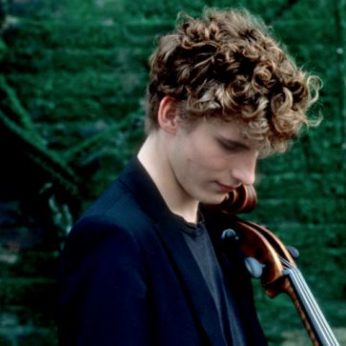Composer: Carl Maria von Weber (b. 1786 - d. 1826)
Performance date: 06/07/2012
Venue: St. Brendan’s Church
Composition Year: 1819
Duration: 00:24:31
Recording Engineer: Anton Timoney, RTÉ lyric fm
Instrumentation Category:Trio
Instrumentation Other: fl, vc, pf
Artists:
Antti Siirala -
[piano]
Andreas Brantelid -
[cello]
William Dowdall -
[flute]

It is the two outer movements that The expressive slow movement, as its title suggests,
Weber’s output; most early-19th century composers earned their keep with
chamber music intended for domestic consumption, but then Carl Maria von Weber,
composer, conductor, virtuoso, novelist, and essayist, was not most composers.
Brought up by his enterprising father to be the new Mozart, Weber’s instincts were theatrical and
Romantic, and the qualities that made him a great composer of opera and
concertos are exactly those that explain why he wrote so little chamber music.
was written in 1815, during his rather nightmarish time in Prague. He had been employed there in 1813 to
resuscitate the ailing Opera on a three and a half year contract, but found
himself facing a resistant orchestra, unresponsive audiences and huge
difficulties building a new company of singers (one of the great difficulties
being that under wartime conditions many potential cast members simply could
not travel to Prague).
Weber also found difficulty in establishing a circle of artists and
intellectuals with whom he could follow his personal passions, although he did
make a firm friendship with the amateur cellist Dr Philipp Jungh, to whom he
eventually dedicated this trio. While in Prague
also fell in love with Caroline Brandt, a significant member of his opera;
despite difficult beginnings they were married in 1917, soon after Weber moved
to Dresden
where he had been employed to establish a royal company for German-language
opera.
poor vocal resources made life difficult in Dresden too, but Weber did at least find
intellectual friends there with whom he was very soon collaborating. His duties
as Kapellmeister however hindered his own compositions, which time and again
had to be shelved as he worked on pieces for the court. In March 1819 a severe
illness left him incapacitated for nearly two months, during which time his
three-month old daughter died. Recovering in the countryside at Hosterwitz that
summer he was finally able to complete a number of contracted pieces, this
flute trio among them.
form the meat of this work, with the scherzo and andante effectively salon
miniatures. The first movement opens sombrely into a reflective sonata, full of
drama and instrumental colour, a shifting between bright Classical and darker
Romantic values providing plenty of contrasting material for development. The
scherzo opens as an angular, offbeat dance, which soon transforms into a
breathless salon waltz, an effective contrast which is played with throughout
the short movement which has no need of the customary trio section.
is based on a simple pastoral melody, the play of sunlight and shadows
delicately cast. The finale takes the form of a rondo, opening deceptively it
is delightfully dramatic music, with strong contrasts again between soft
lyricism and bright, runaway tunes.
Copyright © 2024 West Cork Music. All rights reserved.
Designed and developed by Matrix Internet